In Figure, A is the centre of the circle. ABCD is a parallelogram and CDE is a straight line. Find ∠BCD : ∠ABE.
ABCD∣∣gm
∠A=∠C
∠C=∠ADE(corresponding angles)
∠BCD=∠ADE
Also ∠ABE=BED(alternate angles)
arcBD subtends ∠BAD at the centre BDE at the remaining part of the circle.
∠BED=12∠A=12∠C=12∠ADE,
∠BCD/ABE=∠BAD/BED=∠ADE∠ADE/2=21
∠BCD:∠ABE=2:1
Topper's Solved these Questions
Similar Questions
In Figure, find the four angles A, B, C and D in the parallelogram ABCD
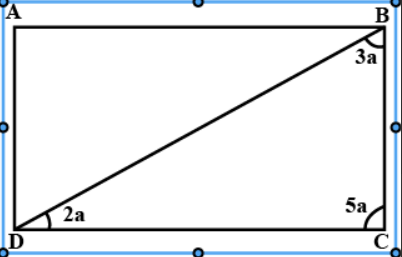 View Solution
View SolutionIf ABC and DEF are two triangles such that AB, BC are respectively equal and parallel to DE, EF, then show that Quadrilateral ABED is a parallelogram Quadrilateral BCFE is a parallelogram AC=DF (iv) ABC ≅ DEF
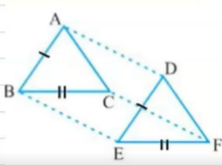 View Solution
View SolutionIn Figure, ABCD and AEFG are two parallelograms. If ∠C=580, find ∠F
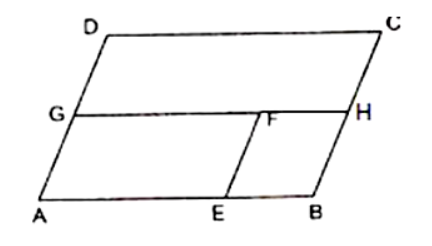 View Solution
View SolutionIn Figure ABCDandAEFD are two parallelograms. Prove that: PE=FQ
 View Solution
View SolutionIn a parallelogram ABCD, if ∠D=115∘, then write the measure of ∠A
View SolutionABCD is a parallelogram in which ∠A=70∘. Compute ∠B, ∠C and ∠D.
View SolutionABCD is a parallelogram in which ∠A=70∘ Compute ∠B, ∠C and ∠D
View SolutionIn the following figure, ABCD is a parallelogram and EFCD is a rectangle. Also, AL⊥DC. Prove that
(i) ar(ABCD)=ar(EFCD)
(ii) ar(ABCD)=DC×AL.
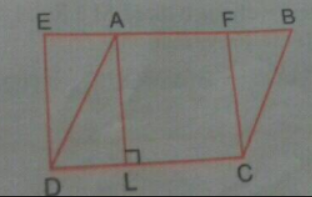 View Solution
View SolutionIn Figure, ABCD is a rectangle in which CD=6cm,AD=8cm Find the area of parallelogram CDEF
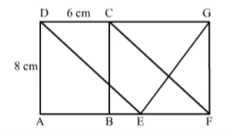 View Solution
View SolutionIn Figure, ABCD is a parallelogram and EFCD is a rectangle. Also AL⊥DC. Prove that : ar(ABCD)=ar(EFCD) ar(ABCD)=DC×AL
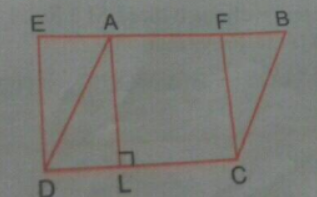 View Solution
View Solution

